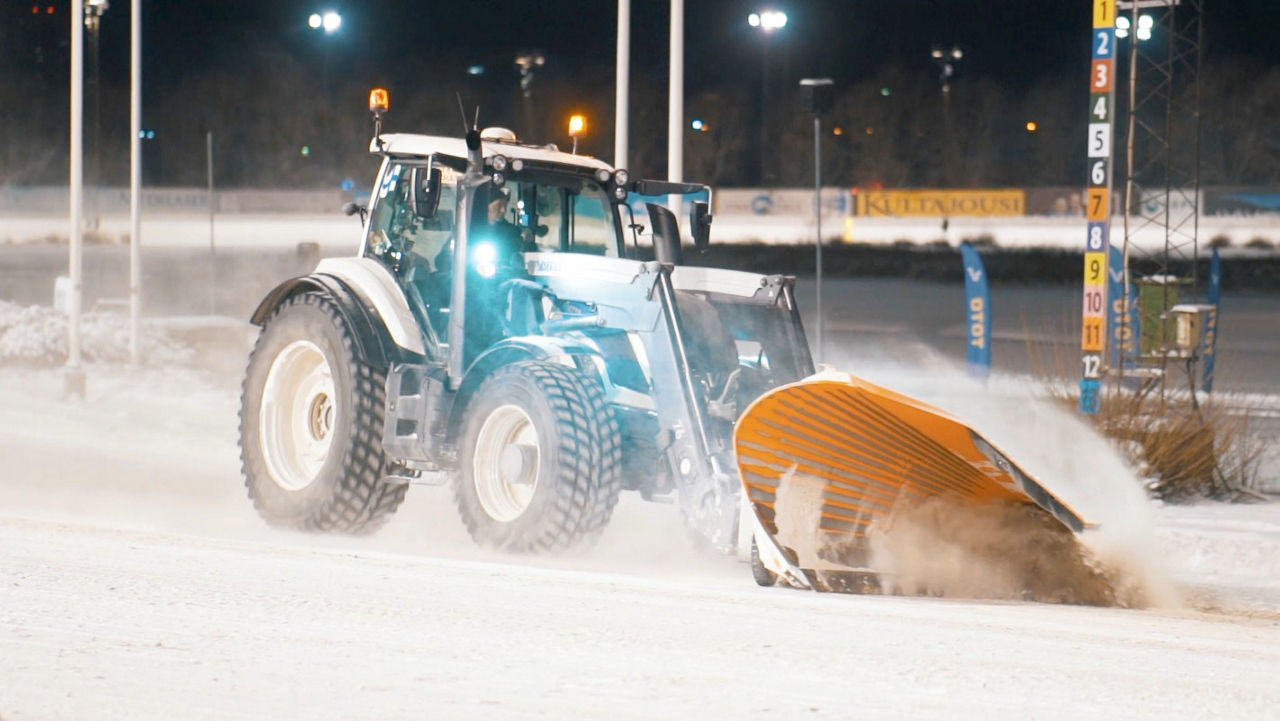
Automated Steering Makes Racetrack Maintenance Easier
Automated Steering Makes Racetrack Maintenance Easier
Tractors automated steering takes your mind first to giant fields and ruler-straight lines. However, automatic steering is also helpful for other locations and tasks. For example, at the Vermo racetrack, automatic steering has simplified maintenance significantly.
The track inspector of Vermo racetrack, Juha Keskimaunu, has driven the T214 Direct for 2,800 hours over the past one and a half years. The tractor is heavily used and the work is hard. With the heaviest pulled grader, the machine has just enough power to pull it.
“Track maintenance is 80% automatically steered. Between race bouts, I drive manually as the robot does not pay attention to any horses nearby. However, during night time the automatic steering is of great help. It’s not faster but work is more accurate and easier as you don’t need to focus on precise steering all the time. The computer moves the tractor with an accuracy of six-twelve millimetres”, explains Keskimaunu.
Keskimaunu has taught the automatic steering routes for graders of various widths. The driving lines have been driven very slowly and accurately and are repeated with the accuracy of a few millimetres. Colleagues from other racetracks have shown interest in Keskimaunu’s experience, so two other tracks are about to get tractors with automated steering.
“Automated steering is not suitable for everywhere. We have a training track in the middle of the forest and the satellite location signal is not accurate enough between trees. The route can be stored but the signal is not accurate enough to drive the whole route with automated steering.”
13 hectares to clear snow
After a snowfall, the Vermo racetrack has 13 hectares to plough, the track itself is three hectares. The machine park includes a Valtra, truck and a wheeled loader. FMG’s zoom-plough is used as a snowplough and Länsikarhu as a snowblower. The tractor can also be linked to a sand distributor. Trucks are used to water the track during the summer. The tractor is also used as a general tool for loading and other various tasks.
“The track is kept suitably soft and perfectly inclined with spiked harrows. The light harrow weighs 3.5t, is 4 metres wide and has 192 spikes. The heavy harrow weighs 5.5t, is four metres wide and has only 160 spikes.” In the cold, the T214 Direct can’t really pull it, so a 470 horsepower truck is used instead, explains Keskimaunu.
The tractor has a front loader and a reverse drive system for a blower. There is no SmartTouch arm rest and Keskimaunu does not really miss it in his current work. LED lights are good for working in the dark and air-conditioning is essential. The stepless drive is exceptionally good.
The Valtra T214 Direct has automated steering, which helps the tractor circle the racetrack on a stored route with an accuracy of approximately one centimetre.
“Vermo hosts some 90 races per year, plus practices and other events. On practice days the track is harrowed in the morning and around mid-day. During race days, the track is harrowed constantly and additionally between bouts. If it snows we also take care of the yard and parking.
The area is not quiet on non-race days as the rental stables train some 80 horses and the territory also hosts a lunch café and an animal clinic. Track inspector Keskimaunu works with two employees but generally drives the Valtra himself.
“Coaches and instructors also have their own wishes regarding track maintenance. They are heard out but track maintenance is a compromise and then you must make up your mind. If you follow every wish of 150 people, nothing good will come of it.
Vermo has used tractors since 1977 and the T214 Direct is the fourth Valtra. The current tractor was procured with a five-year maintenance-lease contract which allows the track to estimate expenses precisely and always gives them access to a fresh tractor. The service dealer at Espoo is just 15 minutes away and the service crew can also come work in Vermo’s heated machine shed.
